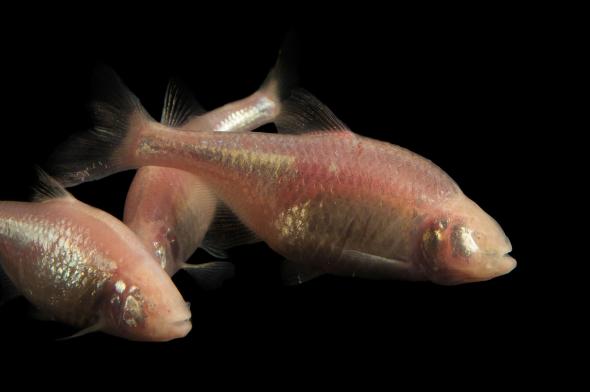To learn about human diabetes, a disease that affects nearly 30 million people in the U.S. alone, a blind fish living in dark Mexican caves might not be the first creature to come to mind.
But researchers at Harvard are studying the fat little fish to learn how they may combat the condition in people.
The findings, recently published in the journal Nature, show the fish is uniquely adapted to regulating its blood sugar.
“We don’t know if studying the fish will directly help us, but evolution has tried a lot of gene variants over millions of years and I think that’s smarter than anything we can come up with, even with machine learning. I think it would be silly not to look,” said one of the study’s authors, Nicolas Rohner, in a press release.
Using a gene sequencing tool called CRISPR, the group of geneticists found that the fish are resistant to insulin.
Insulin is an essential key to turning blood glucose (also called blood sugar) from the food we eat into energy. It’s like a password that helps blood glucose log into our cells.
In people with type 2 diabetes, their insulin is either not working correctly or not being produced enough, and high blood sugar often results. Similarly, the cavefish also experience elevated blood sugar, but they surprisingly have few health impacts from it.
Previous studies of the fish found they have a gene that induces an insatiable appetite. In people, the condition is dangerous, but it helps the fish store fat during periods of food scarcity. It helps them survive in caves that have inconsistent abundance of algae, their primary food source.
The researchers then compared the cavefish to their skinnier counterparts, a river fish with sight that is missing the insulin resistance developed in the cavefish. Each of the two species was found to live equally long lives.
Hybrids between the river fish and the cavefish were made in a lab, and the resulting offspring were expectedly chubby and showed high glucose levels. Zebrafish were then injected with the insulin-resistant mutation. They too gained weight and became insulin resistant.
When people have high blood glucose, the sugars in our cells are essentially coated with sugar, causing them to malfunction.
“The cavefish have high blood sugar, but no sugarcoated proteins. How do they do that?” asked Misty Riddle, an author on the paper, in a statement.
By better understanding how the fish lead healthy lives with high amounts of sugar, researchers think they may be able to develop strategies that help humans cope with diabetes.
Hybrids between the river fish and the cavefish were made in a lab, and the resulting offspring were expectedly chubby and showed high glucose levels. Zebrafish were then injected with the insulin-resistant mutation. They too gained weight and became insulin resistant.
When people have high blood glucose, the sugars in our cells are essentially coated with sugar, causing them to malfunction.
“The cavefish have high blood sugar, but no sugarcoated proteins. How do they do that?” asked Misty Riddle, an author on the paper, in a statement.
By better understanding how the fish lead healthy lives with high amounts of sugar, researchers think they may be able to develop strategies that help humans cope with diabetes.












